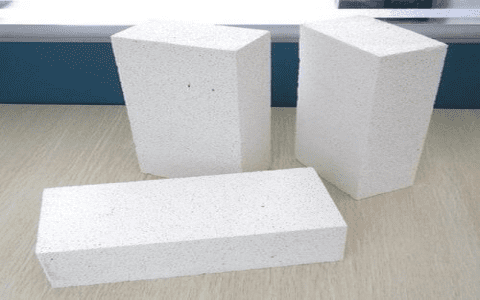Alright, let’s talk about fire bricks. You know, those things they use in fireplaces and stuff. I ain’t no fancy scientist or bricklayer, but I know a thing or two ’cause I’ve seen ’em around.
What are fire bricks, anyway? Well, they ain’t your regular ol’ bricks, that’s for sure. They’re special, real special. They call ‘em fire bricks, or sometimes refractory bricks, sounds all highfalutin, don’t it? Basically, they’re tough blocks made of some kinda clay stuff that can stand the heat, I mean *real* heat. We’re talkin’ hotter than your oven gets when you’re bakin’ a pie, hotter than a summer day in July, hotter than… well, you get the picture. They use ’em in furnaces, fireplaces, you name it. Anywhere it gets hot as blazes.


Now, why do you need these special bricks? Simple. Regular bricks, they’d crack and crumble under all that heat. But fire bricks? They hold up. They keep the heat where it’s supposed to be and protect the outside from gettin’ too hot. Think of it like this: you wouldn’t use a flimsy dish towel to grab a hot pot outta the oven, would ya? Nah, you’d use a thick oven mitt. Fire bricks are like the oven mitt for your fireplace or furnace.
Why are fire bricks so tough? Well, it’s all got to do with what they’re made of. They got this stuff called alumina in ’em, a lot of it. And that alumina is what makes them so good at standin’ up to the heat. I heard tell they can handle temperatures over 1500 degrees! That’s hotter than a blacksmith’s forge, I reckon. And they don’t just handle the heat, they also handle changes in heat, like when you start a fire and then let it die down. Regular bricks, they’d crack right in half from that.
- They keep the heat in: Like a good wool coat on a cold day.
- They protect the outside: So your stove or fireplace don’t get all messed up.
- They can take the heat: Lots and lots of heat.
You can tell a fire brick from a regular brick pretty easy, too. Most times, they’re white or kinda yellowish. Sometimes, they get a little red if they’ve been used a lot. And they feel different too. Regular bricks are kinda rough and porous, like a sponge. But fire bricks are smoother and heavier, feels like they’re packed tighter.
I remember seein’ my grandpappy usin’ these bricks when he built the old bread oven out back. He said they were the only things that could handle the heat day in and day out. He used to bake the best bread, crusty on the outside, soft on the inside. Said it was the bricks that made the difference, kept the heat even and steady. He knew a thing or two about buildin’ things, my grandpappy. He always said, “If you’re gonna do somethin’, do it right. And if you’re buildin’ somethin’ that needs to stand the heat, use fire bricks.” Wise words, them.
So, where do you find these fire bricks? Well, you ain’t gonna find ’em at the corner store, that’s for sure. You gotta go to a special place, a place that sells stuff for fireplaces and furnaces. Or you can order ’em online, I guess. Everything’s online these days, ain’t it? They ain’t cheap, though. Good things never are. But they’re worth it, if you need somethin’ that’ll stand the heat.
Different kinds of fire bricks? I reckon there are, just like there are different kinds of everything. Some are made for real high temperatures, like in a furnace. Others are for lower temperatures, like in a fireplace. Some are denser than others, some are bigger, some are smaller. It all depends on what you need ‘em for. But they all got one thing in common: they can take the heat.
Now, I ain’t no expert, but that’s the gist of it. Fire bricks are tough bricks that can stand the heat. They’re used in fireplaces, furnaces, and anything else that gets real hot. They keep the heat in, protect the outside, and last a long time. If you’re buildin’ somethin’ that needs to stand the heat, fire bricks are the way to go. That’s all there is to it.
Tags: [fire brick, refractory brick, fireclay brick, heat resistance, high temperature, furnace, fireplace, alumina]





